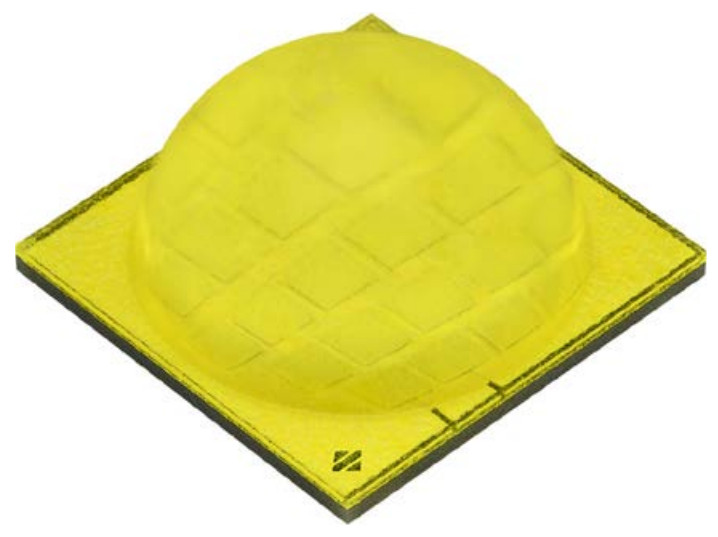
Zoho CRM has led the customer relationship management (CRM) category for several years. It’s one of the best-known brands for small to midsize businesses, and its features rival those found in most enterprise-grade CRMs (with the exception of behemoth platform products like Salesforce). Features like CommandCenter and Kiosk Studio help sales teams visualize the buyer’s journey, while Cadences lets them build and automate follow-up strategies. In addition, Zoho CRM has further embraced artificial intelligence (AI), expanding the capabilities of its Zia AI sales assistant and introducing ChatGPT integration to help draft emails (a tool dubbed Smart Prompt). Despite these additions, Zoho maintains its competitive pricing. It’s a better value than ever for businesses seeking a highly customizable CRM with a deep feature set. Along with Apptivo, it remains an Editors’ Choice winner—although the former might be a better choice if you don’t plan on investing in Zoho’s other business software offerings.
Getting Started With Zoho CRM
When first configuring Zoho CRM, your organization’s designated Zoho administrator will likely start with the Setup view. This is the app’s backend where admins manage all aspects of the software. You can customize this Setup view to include only the most pertinent features for your business.
(Credit: Zoho/PCMag)
Administrators use this view to set up users, define roles, configure single sign-on, and kick off data importing and Active Directory syncing. A Marketplace tab lets you access many app integrations from partners—big services like Google Workspace and Microsoft 365—and Zoho’s own business apps, including Zoho Analytics, Zoho Campaigns, and Zoho Social.
Individual users and developers can also access Setup to customize the experience. You can edit profiles, launch in-app chats, and add links to email signatures that let prospects book time directly. Developers can access Zoho’s APIs, Zia Voice, widgets, and web forms.
Configurable Views
Users don’t default to Setup. Instead, they have individual Welcome screens. There’s a lot of information on these screens, and Zoho only does a so-so job of presenting it. The screen is clear, but it’s dense by default when compared with Insightly‘s slicker UI. The view is packed with information, including open tasks, current leads, and pending engagements with customers.
(Credit: Zoho/PCMag)
On the upside, the Welcome page is fully customizable. For example, if you’d rather see which customers’ calls are overdue, you can replace your open task list with that information. Salespeople will see landing pages filled with open tasks, but managers can add other important dashboards.
If you’re having trouble creating a custom landing page that doesn’t require scrolling, Zoho lets you set up multiple landing pages. For example, you can configure two landing pages and click between them if you’re both a salesperson and a sales manager.
Zoho’s core CRM module is customizable, too. Your Leads view defaults to a list that has all the information you need, but it might not present it how you’d like. In that case, you can opt for a Kanban view that reorients your leads around whichever fields you think are most important, such as the name, the lead’s source, or the lead’s annual revenue.
When you select Kanban, a dialog box opens that shows the available fields. Whichever ones you select display on your Kanban cards. You can then color code the cards by whatever is most important to you, such as priority, deal size, or date.
(Credit: Zoho/PCMag)
If you’re using Kanban for deals, you can grab a card and drag it along your pipeline process stages as the deal progresses. It’s not the most attractive interface, but it’s packed with information and customization options.
To test Zoho’s lead features, we first had to import some contacts, which we did with all our contenders. In Zoho, you’re presented with two options: import data from a CSV file or from another CRM. Opt for the latter, and you’ll get one-button import options for many popular Zoho competitors, including Bitrix24, HubSpot, Insightly, Microsoft Dynamics, and more—including Zoho’s own alternative, pipeline-driven CRM, BigIn by Zoho.
(Credit: Zoho/PCMag)
Importing data into Zoho varies, depending on the outside platform. For Insightly, you can migrate data into Zoho using the API; for Salesforce, you must migrate data from a backup file. This means you need to open the app’s backup files from inside Zoho and then wait for the data to process. Once finished, you’ll see a list of all the backup files you processed.
Much of that happens automatically, so you’ll only have to manually map the ones that Zoho couldn’t figure out on its own. Anything leftover is considered unsupported and won’t be migrated. Once you’ve gone through one set of backup files, performed your mapping, and completed a final review, you can kick off the migration.
If you’re not using any of these systems, however, you’ll need to do what we did, which is import from a CSV file. Once we figured out where to do it, adding our small test file of 50 contacts was simple enough. We went straight to Settings, where there was a clearly marked Data Import selection. That didn’t give us a CSV option, however. It took a bit of fumbling before we figured out that we needed to go to one of the record tabs, such as Leads or Deals, and then click Create, followed by Import. That gave us the choice to use a CSV file or import from another CRM.
Like most systems, if you opt for CSV, you’ll get a screen that lets you map the fields from your CSV file to the associated Zoho fields. The system automates this as much as possible, but you should verify this carefully because errors are difficult to correct later. For our test file of 50 contact records, Zoho automatically picked up every field except our EU Exporter field (which required us to create a custom field). It was a straightforward process.
Leads and Deals
Once you’ve got your contacts imported, you can turn them into leads by adding more detailed information in each contact’s business card view. You can also add basic deal details and other data, such as contact status, deal progression, email replies, and event attendance.
(Credit: Zoho/PCMag)
Although the lead view contains all of a prospect’s contact information, there’s still a separate Contact tab with a drill-down screen similar to the one you’ll see in Leads. You’ll also see the deal you’re working on with that contact, but what makes the Contact record different is that it also shows that contact’s other current deals. So, basically, the Lead view is all about your individual interaction with the prospect, while the Contact view is about the prospect’s interaction with your entire company.
(Credit: Zoho/PCMag)
The Deals tab is where most of the fun happens. There, you quickly create a deal by filling out a series of data fields that add a deal name, prospect identifiers, and other details, such as the deal type, opening and expected closing dates, and its pipeline stage.
Once it’s created, you can create a task from the Deals screen that automatically attaches to the deal you’re viewing (and appears on your home page and relevant dashboards). Calls and meetings are the typical tasks here, but emails have a section of their own. This shows your entire email history with that deal’s lead. To get this, though, you’ll need to sync Zoho with your current email inbox.
How Does Zoho CRM Integrate With Email?
Zoho displays your entire email history adjacent to that deal’s lead. To get this, though, you must sync Zoho with your current email inbox. We did this for all our CRM contenders, since email is still the most popular sales communications channel, next to phone calls. You can also set up your email by your administrator, who might import a long list of Active Directory contacts and establish email connections with each one. Or, you can do it on an individual basis to an email address created by the user.
We went that route and found it a simple, two-click process. Pick the email service you’re on, decide whether you want to operate using IMAP, POP, or custom API, and then enter your account’s address and password. That’s it. The big names, such as Google Gmail, Microsoft Exchange, and Microsoft Outlook, all have simple, one-button access, though you can use other services if you’re willing to add some more detailed email server information.
(Credit: Zoho/PCMag)
Like Onpipeline, Zoho digs through your inbox for names it has in its Leads database. If it finds any, it grabs up to the last 10 years of email history and adds it to the lead’s record. That’s a nice touch. Zoho’s latest iteration expands upon its email parser by offering an overview of the data type it’s extrapolating from each email (including details it might have missed), weekly reports showing how many email leads were captured, and a “send for approval” option to avoid adding duplicate and junk leads.
Once you sync your email, you can build templates and signatures that you can send directly from Zoho CRM. This is a full WYSIWYG control over how your email looks, including fonts, return address (which doesn’t have to be the same as the sending email), and signature. It’s similar to the email template builder you’d find in an email marketing system. If you want more of those feature types, check out Zoho Campaigns.
(Credit: Zoho/PCMag)
In 2023, Zoho introduced Smart Prompt, which integrates OpenAI’s ChatGPT with Zoho’s own Zia AI sales assistant. Smart Prompt drafts emails from scratch or tweaks an existing message for tone and grammar. It will even suggest follow-up questions to help you gather more information. For instance, when we drafted a brief email to confirm a dinner reservation with a client, Smart Prompt recommended we add a note about possible dietary preferences. That’s not only thoughtful, but it also highlights Smart Prompt’s value as a tool to help you pick up on things you might have missed—although we still wouldn’t recommend sending purely AI-generated messages without human oversight.
Zoho CRM Mobile Apps
Zoho’s mobile clients are available for Android and iOS. As expected, they’re focused on tasks, scheduling, and Leads and Deals. The apps mirror all contacts in your Zoho account, but you can add the ones on your phone, too. The Leads and Deals module gives you all the basic functionality of the web version, including record modifications, so you can add a new Lead or move a Deal forward in the pipeline from your phone. You can add or update Leads and Tasks offline and sync that data to the CRM once you’re back online.
The mobile client also has a view into deal analytics, both individually and for your team if you’re a manager. Zoho touts the client’s intelligent route planning feature, but this boils down to a Google Maps-style display of the day’s meeting locations arranged in the most efficient way. It’s handy, but it’s not like you can’t do it using features native to your phone. Zia functions similarly to Siri or Google Assistant here. You can ask Zia to change a lead status, create a contact, or add an event to your calendar.
(Credit: Zoho/PCMag)
Reporting and Analytics
Reporting is yet another highly functional module that won’t initially wow you with its looks. The report builder and scheduler exist as a dense table packed with reports (and the folders into which you’ve organized them).
The Create Report button takes you to a visual editor where you can create reports based on key filters that Zoho matches to your data. Click the field you want, and the builder presents you with a series of child fields so you can make a top-down report starting with your umbrella category (and drilling down as far as your data takes you). Once you’ve got what you want, you can test the report, tweak it as necessary, name it, run it, and schedule it for regular runs. You can export your report as CSV data or send a link to others via email. If you’re not thrilled with how the default table view looks, Zoho has a Create Chart button that lets you play with your report’s appearance.
(Credit: Zoho/PCMag)
It’s important to note that Zoho distinguishes between analytics and reporting. A report is a static data snapshot you can shape and disseminate. Analytics (previously called Dashboards) is a live set of dashboard views that let you see what’s happening as it happens and draw conclusions from that.
The Analytics tab has eight components that you can arrange using drag-and-drop functionality. Once you’ve decided what data you’d like to follow here, Zoho presents it as a standard chart, a KPI, a funnel, or several other visual styles. That’s a nice feature since it lets each user digest what they need to know in whatever format works best for them.
Workflow Automation
You can think of Zoho CRM workflows as a series of if/then statements. Basically, they’re strings of rules that state that if one thing happens, then kick off this other thing. To create a new rule, you go to Settings, choose Workflows, and then Create Workflows. Zoho then asks you to choose the relevant module, meaning the one to which the rule applies.
(Credit: Zoho/PCMag)
We wanted to send a follow-up email to a lead thanking them for attending the first sales meeting. We began by choosing Leads as the module and supplying a description and name of the workflow we were building. From there, it moved us to the Workflow Builder, which walked us through the details. That included the kick-off time, to whom it would apply, and what actions we wanted to take. All this happens in a visual interface where you connect actions while adding details in each action box.
It’s a decent enough setup, but definitely not one with which you’re going to create complex workflows out of the box. You’ll face a steep learning curve before you can really get the most out of Workflow Builder. To build our email response workflow, we had to understand how to filter contacts based on last-activity markers and define those inside the report builder. That’s not a lightweight activity, and in the end, we couldn’t figure out how to automatically generate the email. Instead, we re-jiggered the rule to just add an item to the salesperson’s task list for them to complete after the first time they met with a prospect.
We’ve certainly seen easier workflow designers among competing CRM systems, such as Insightly. Although Insightly’s automations are easier, Zoho’s workflows are far more customizable; you just have to work a little harder to get there.
Canvas, Motivator, and Zia
Canvas, Motivator, and Zia are the top three new features you should explore in Zoho CRM.
Canvas Builder is all about designing layouts for your most-used screens. You access Canvas through the Settings page under Customizations. You then choose which page or template you want to apply Canvas to, including an entirely blank template that lets you create a new view from scratch. After that, you’ll see a long list of all available data lists and “app actions” (read: functions) that you drag and drop anywhere onto your Canvas view. You can even create custom buttons and match them to existing or new data points. The drag-and-drop functionality is a little jumpy, however.
(Credit: Zoho/PCMag)
Despite our earlier digs at Zoho’s UI, this is the way to fix many of those issues. You’ll just need to take the time to do it yourself rather than having Zoho do it for you. Then again, if you go to the trouble, you’ll get a prettier view.
You can do something similar in Salesforce, but it’s a much more difficult process that almost guarantees the need for an extra cost consultant. Canvas is easier and faster, but it isn’t free or without limits, so read the fine print. The number of custom views you can build changes depending on which pricing tier you choose, and even at the highest tier, you’ll be limited to 25 custom views per module.
(Credit: Zoho/PCMag)
Motivator isn’t exactly new, but it’s certainly cool. Zoho has had a gamification feature for a long time, but only as an add-on called Gamescope. Motivator is that same feature, but it’s now baked into Zoho CRM’s default features. It’s essentially a reporting tool that turns key performance indicators (KPIs) into targets and competitions, with the idea being that it’ll not only foster competition between your salespeople but it’ll also foster the adoption of the CRM.
You create your KPIs, then create a set of Targets around them. Once those are established, you can build a game around them, such as seeing who can create the most Leads every month. Creating a game is a quick process. You just fill out which KPIs are involved, who the players are, and key in the winning targets. Winners receive trophy images inside of Zoho, though you’ll probably want to back that up offline with something more substantial. Salespeople are jaded.
(Credit: Zoho/PCMag)
What’s New With Zia?
Zia is Zoho CRM’s AI-powered sales assistant. Although it isn’t a new feature, AI is becoming increasingly common in many aspects of the workplace. So it’s no surprise that Zia has been given a lot more to do in its current iteration. It still enriches data, predicts outcomes based on previous deals, and detects anomalies in your sales process. Zia features the aforementioned Smart Prompt, but it can also validate images, generate estimated sales goals, and monitor what people are saying about your company.
Zia Vision helps companies build a standardized library of product images. You can train Zia by adding various images of an item type; the more, the better. To test Zia Vision, we uploaded five images of bicycles for it to learn from, then created a product page for a bicycle. When we uploaded a picture of a bed to the bicycle product page, Zia flagged it as incorrect; when we replaced it with a bicycle photo, Zia approved it. This has the potential to save a lot of hassle for data entry and quality control.
Zia image validation in Zoho CRM (Credit: Zoho/PCMag)
Another new Zia skill is Strategy Influencer, which generates estimated goals and makes recommendations based on CRM sales data. You can ask Zia AI to set a sales target and then explain why it chose that target, providing greater context for sales leaders to develop their overall goals. With Churn Prediction, Zia assigns customers a score and then creates a workflow to prevent the lowest-rated customers from leaving. Zia provides a self-assessed accuracy level on a 100-point scale and retrains itself every 15 days if it dips below 60%.
Zia identifies customer sentiment, intent, and emotion by scanning emails, call transcripts, surveys, and social media posts. With Voice of Customer, Zia generates word clouds based on the words and phrases that are most often used about your company. You can also track what people say about your competition, allowing your business to capitalize in areas where your rivals fail.
However, Zia needs time to work—particularly when it comes to Ask Zia. We found that it’s incapable of detecting nuance or ambiguity, so you’ll want to brush up on Zia’s library of approved questions and commands, at least in the beginning. That said, AIs improve by learning over time, so we recommend enabling Zia as soon as you can.
(Credit: Zoho/PCMag)
Cadences, Kiosk Studio, CommandCenter, and CPQ
Over the last year, Zoho added four brand-new features: Cadences, Kiosk Studio, Command Center, and Configure Price Quote.
Cadences lets salespeople build automated follow-up sequences for user segments based on where they are in their buyer’s journey. It has a Kanban-style layout, and you can add three actions: Call, Email, or Assign Task. Once you receive the desired response from a lead or client, their record will automatically drop from the cadence, ensuring they’re not hassled with repeat information. You can evaluate the performance of each follow-up stage through detailed analytics.
Relative to Zoho’s automated workflows, the cadences are fairly easy to set up, and you can be as detailed as you like regarding timing and intention. However, an option for SMS or messaging services (like WhatsApp) would be a welcome addition, especially given Zoho’s omnichannel capabilities.
Kiosk Studio is similar to Canvas in its no-code approach to customization, but the aim here is to build an accessible data retrieval system within the CRM. A kiosk has three main components: Screen, Decision, and Action. Screen is the information that’s displayed or requested. Decision creates branches based on the data input. Action results from proceeding through each screen, whether creating a record or sending an email notification.
We configured a couple of basic kiosks for scheduling discovery appointments and signing up for a rewards program. Although there’s no coding, building a kiosk is an involved process, as you must account for a multitude of if/then scenarios. Before deploying a kiosk, you can do a test run within the Kiosk Studio to make sure it’s working properly.
(Credit: Zoho/PCMag)
CommandCenter combines the visual aspect of Kiosk with the automation of Cadences. It’s divided into two segments. Journey Builder lets you create an automated flowchart with multiple scenarios based on a customer’s actions (or inactions). Path Finder uses visual charts to detect patterns and identify pain points throughout each touchpoint of the customer journey. CommandCenter is best suited for onboarding new clients and walking people through online applications.
Configure Price Quote is yet another automated feature within Zoho CRM that’s designed to save time and reduce the likelihood of human error. It uses CRM data to automatically generate invoices, quotes, purchase orders, and sales orders. You can configure product rules and dynamic pricing, which is useful for calculating taxes, adding discounts, and upselling bundle deals.
How Much Does Zoho CRM Cost?
Zoho CRM has four pricing tiers. Standard is the entry-level plan that costs $14 per user per month (billed annually) and has the smallest feature set. You’ll get most of the core modules, including workflows, multiple pipelines, and all the custom dashboards described above. However, there are limits. For example, you’ll only get basic reporting options, and the Canvas Builder only allows one custom view per organization. And there’s no Zia, CPQ, or Kiosk Studio, either.
The Professional tier costs $23 per user per month (billed annually). It adds more advanced reports, additional reporting options, access to CPQ, and a Canvas Builder that supports three custom views per organization.
Enterprise is supposedly Zoho’s most popular tier and costs $40 per user per month, again if billed annually. This adds most of the goodies, including Zia, Kiosk Studio, and a Canvas Builder that’ll provide your organization with five custom views per module.
Finally, there’s the tier we tested, Ultimate, which costs $52 per user per month. This has all the advanced reporting described above, as well as a bundle that includes Zoho’s business intelligence tool, Zoho Analytics.
So, Zoho delivers lots of functionality at a competitive price. It’s cheaper than several other CRMs aimed at SMBs, including Insightly, Salesflare, and Salesforce Starter.
Insightly and Salesflare have a mid-tier price of $49 per user per month, which is roughly comparable with Zoho. But at their high ends, their Enterprise tiers cost $99 per user per month, compared with Zoho’s $52 for Ultimate. What’ll move you to Insightly over Zoho will almost certainly be Insightly’s overall easier usability and shorter time to deployment. But at almost half the cost at the highest tier, a lot of customers will eat those early disadvantages for the long-term benefits that Zoho’s deeper features can provide.
Verdict: Zoho CRM Provides Powerhouse Features for a Low Price
Zoho CRM provides all the tools you’ll need for small to midsize businesses and even most enterprises. Its feature set is second only to Salesforce, and these days Salesforce is more of a platform than a product. Even if it lacks the slickest interface out of the box, Zoho CRM is highly customizable. Combine that with a long list of third-party integrations and a healthy partner ecosystem, and you can make Zoho work almost anywhere. Even better, it has one of the most competitive price tags among the CRM products we’ve reviewed.
As a result, Zoho CRM remains a PCMag Editors’ Choice winner. If you’re in the market for a CRM, Zoho should be at the top of your list of choices, although it perhaps does not distinguish itself as well if you don’t plan to buy into the larger Zoho ecosystem of apps. If you’re looking for something more standalone, consider alternatives in the form of our other Editors’ Choice winner, Apptivo, or the entry-level version of the Salesforce platform, Salesforce Starter.
Oliver Rist contributed to this review.
Pros
View
More
The Bottom Line
Zoho continues to lead the CRM category thanks to its unbeatable price and many new, useful capabilities, including deep customization and the Zia AI tool.
Like What You’re Reading?
Sign up for Lab Report to get the latest reviews and top product advice delivered right to your inbox.
This newsletter may contain advertising, deals, or affiliate links. Subscribing to a newsletter indicates your consent to our Terms of Use and Privacy Policy. You may unsubscribe from the newsletters at any time.






















